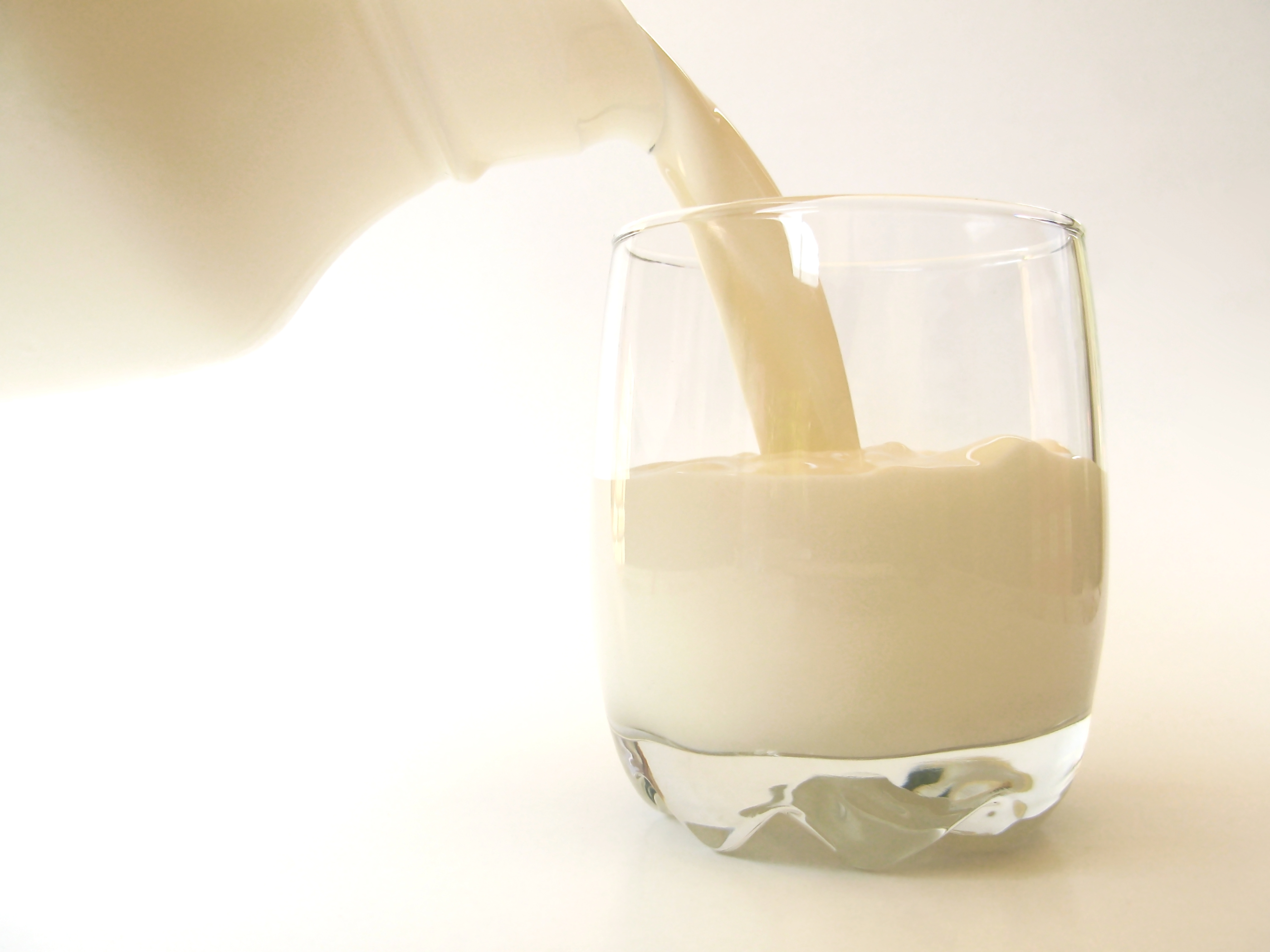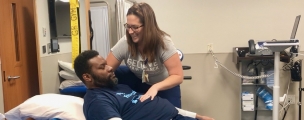As a follow-up to my blog on the difference between osteoporosis and osteoarthritis, I will be posting a monthly blog on the prevention and management of osteoporosis. Overall, no matter what your age, the recipe for bone health is simple for both men and women:
- Get enough calcium and vitamin D in your daily diet
- Exercise regularly
- Make healthy lifestyle choices
- Talk to your physician about your bone health
Today, we’re going to talk more about the first ingredient in our recipe for healthy bones: calcium and vitamin D. So what exactly do these nutrients do, and why are they important for maintaining healthy bones?
Calcium is needed to build new bone and vitamin D is needed to properly absorb the calcium from our digestive tract. Calcium is an important nutrient throughout your life, and particularly during the growth years. For women, it is especially important during pregnancy and while breastfeeding.
Where do you get calcium? Dairy products (low-fat or non-fat milk, yogurt and cheese) are excellent sources of calcium. Many products are calcium-fortified such as cereals, orange juice and soy milk. You can also get calcium from broccoli, leafy green vegetables and soybeans. If you drink soy milk that is fortified with calcium, be sure to shake the container thoroughly as calcium can settle at the bottom. If you are lactose-intolerant, there are many lactose-free dairy products and you can opt to eat calcium-fortified foods.
Vitamin D is needed to absorb calcium. Your skin makes vitamin D when exposed to the sun; however, vitamin D levels can still be low despite sun exposure. Also, we know that sun exposure is a risk factor for skin cancers. In addition, people who live in northern latitudes are unable to produce vitamin D from the sun during the winter months.
Where do you get vitamin D? Milk is fortified with vitamin D. Liver, fatty fish and egg yolks also contain vitamin D. Your physician can run a simple blood test to see if you are getting enough vitamin D for healthy bones. If you aren’t receiving adequate vitamin D or calcium, your healthcare provider may recommend a supplement.
Now that we know the importance of calcium and vitamin D, the next question is how much should we be getting each day? Well, the following table provides the recommendations of the National Osteoporosis Foundation. Please note that for ages 1 through 18 years, the recommendations for vitamin D are those of the Institute of Medicine of the National Academies and National Institutes of Health, Office of Dietary Supplements.
| Children & Adolescents | Calcium (Daily) |
Vitamin D (Daily) |
| 1 through 3 years | 500 mg | 200 IU * |
| 4 through 8 years | 800 mg | 200 IU * |
| 9 through 18 years | 1,300 mg | 200 IU * |
|
Adult Women & Men |
Calcium (Daily) |
Vitamin D (Daily) |
| 19 through 49 years | 1,000 mg | 400-800 IU |
| 50 years and over | 1,200 mg | 800-1,000 IU |
|
Pregnant and Breastfeeding Women |
Calcium (Daily) |
Vitamin D (Daily) |
| 18 years and under | 1,300 mg | 400-800 IU |
| 19 years and over | 1,000 mg | 400-800 IU |
 Reading food labels is the key to knowing how much calcium and vitamin D you are getting from a single serving of a food source. To begin, the Daily Value, or DV, for calcium is based on 1,000 mg daily. Therefore, a serving of milk with a DV of 30% means that it contains 300 mg of calcium. A serving of food with a DV of 20% calcium contains 200 mg of calcium.
Reading food labels is the key to knowing how much calcium and vitamin D you are getting from a single serving of a food source. To begin, the Daily Value, or DV, for calcium is based on 1,000 mg daily. Therefore, a serving of milk with a DV of 30% means that it contains 300 mg of calcium. A serving of food with a DV of 20% calcium contains 200 mg of calcium.
In the case of vitamin D, the daily value is based on 400 IU daily. Therefore, a serving of food with 50% vitamin D has 200 IU of vitamin D. A food serving with 25% vitamin D contains 100 IU of vitamin D. There are few food sources for vitamin D, so unless an item has been fortified with vitamin D, most food labels do not list the percent of the DV of vitamin D.
There you have it! The first ingredient in the recipe for health bones is calcium and vitamin D — are YOU getting enough?
Stay tuned for future posts on recipes for healthy bones!
To learn more and schedule your free screening, visit Magee’s Osteoporosis Clinic at the Riverfront Outpatient Center. Click here for more info!







